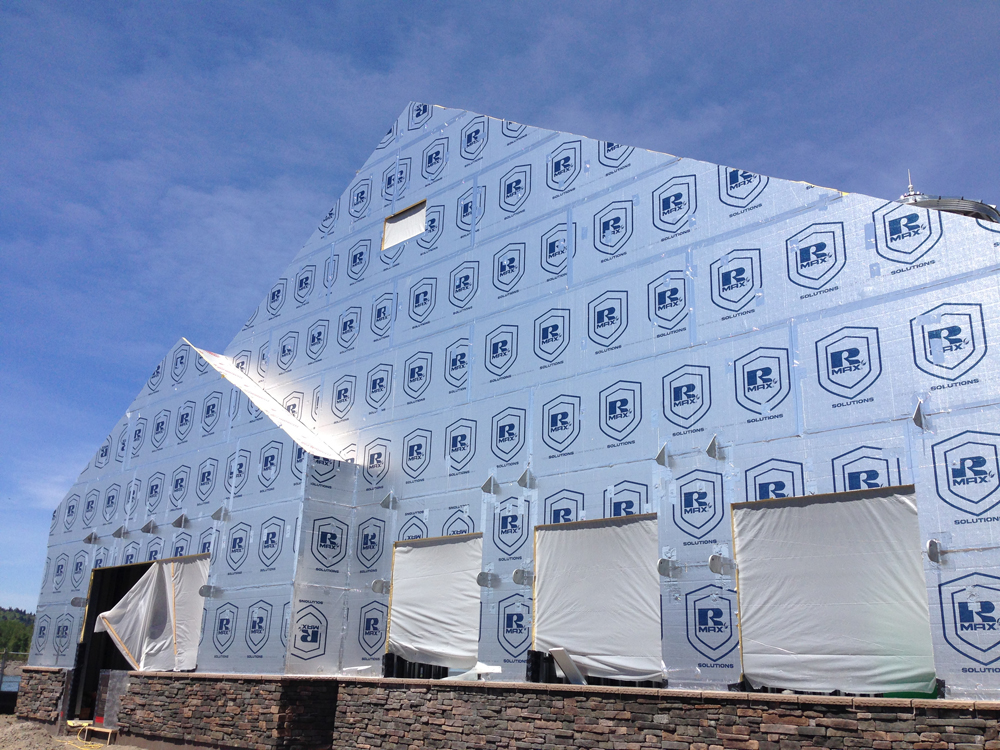In commercial construction, the emphasis on building efficiency and sustainability is at an all-time high. Central to this focus is the role of air barriers, which are integral components in maintaining the integrity of a building’s envelope.
A building’s envelope separates the inside, built environment from the rest of the world. The integrity and performance of the building envelope is critical to energy efficient, low maintenance, and sustainable construction. Choosing the right solution when it comes to commercial air barriers requires awareness of the available options and knowledge of the applications where different variations can excel.
The Role of Air Barriers in Commercial Buildings
Air barriers play a crucial role in controlling air flow into and out of a building. Their primary function is to seal the building envelope to prevent uncontrolled air leakage which can lead to significant energy loss.
For optimal air quality, energy efficiency, and building longevity, airflow into and out of a building should be controlled and managed through the building’s ventilation system.
Allowing conditioned air to leak out and unconditioned air to infiltrate a building is not only a waste of energy, it can lead to issues with condensation, mold, and comfort issues. In commercial buildings, where heating and cooling systems are extensive, the efficiency of the ventilation system is highly dependent on the effectiveness of the air barrier.
Benefits of Effective Air Barrier Solutions
Effective air barrier solutions provide numerous benefits. They significantly reduce energy consumption by maintaining controlled indoor environments which reduces operational costs. They also prevent moisture ingress, which is a leading cause of structural damage and mold growth.
Moisture ingress can not only affect a building structurally, it can also degrade indoor air quality. Leaky air barriers can allow sections of a wall assembly to cool below the dewpoint of the surrounding air. When this occurs, liquid water forms and accumulates. Over time, the water can degrade the wall assembly or lead to worse issues.
In the context of regulatory compliance, modern air barriers are designed to meet the stringent standards set by building codes, to help ensure that buildings are not only efficient, but also safe and durable.
Overview of Commercial Air Barrier Solutions
Technological advancements have led to the development of superior air barrier solutions like the ECOMAXci® Wall Solution which includes the ECOMAXci® FR Air Barrier.
Air barriers are often just one part of a solution which can serve additional functions to make construction easier and more efficient for the contractor. These innovative products exemplify the blend of energy efficiency and moisture management that is crucial for the modern commercial building.
The Technical Aspects of ECOMAXci® Wall Solution
At the heart of the ECOMAXci® Wall Solution is its advanced material technology. It provides an effective drainage plane that is crucial in managing moisture, and offers superior resistance to mold and moisture penetration. This not only contributes to the building’s thermal efficiency, but also its overall health and structural integrity. The ECOMAXci® Wall Solution consists of four main components that work together to achieve high fire, air, thermal, and water performance:
ECOMAXci® FR Air Barrier
R-SEAL 2000 LF
R-SEAL 3000
R-SEAL 6000
The heart of the solution is the ECOMAXci® FR Air Barrier. Made with a closed cell polyiso foam core and embossed aluminum facers, this component serves as an air barrier and continuous insulation component. The aluminum facer also helps to minimize radiant heat transfer and reduce moisture infiltration.
The R-SEAL 2000 LF and R-SEAL 3000 components are just as important to a complete air barrier solution. These components are designed to seal the joints formed where the insulation panels meet. By applying these sealants across joints, the air and water barrier is made continuous. The R-SEAL 2000 LF and R-SEAL 6000 components are also designed to provide flashing around doors, windows, and penetrations in order to provide an overall continuous air and water barrier solution.
Cost-Effectiveness and Installation
A key advantage of modern air barrier solutions is their cost-effectiveness. The ECOMAXci® Wall Solution, for example, is not just affordable in terms of material costs, it also reduces labor costs due to its ease of installation. One solution provides a layer of continuous insulation, an air barrier, and a water barrier for the entire wall assembly. This makes it an attractive option for a wide range of commercial construction projects.
Air Barriers Keep Commercial Buildings Efficient
Air barriers play a critical role in modern commercial construction and innovations have made air barriers easier to install correctly, than ever before. Choosing the right air barrier solution in commercial construction is critical to keeping a project on time and under budget that results in a high performing finished building.
The quality of the air barrier directly influences the performance, sustainability, and cost-efficiency of commercial buildings, which makes it a key consideration in any construction project. Advanced solutions like the ECOMAXci® Wall Solution make the choice easier by providing many high quality components of a building’s envelope in one easy to install solution.




